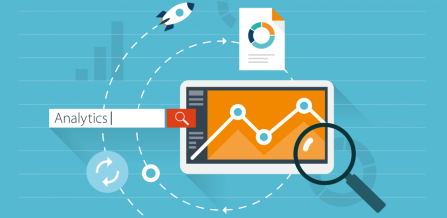by Thom Forbes, Featured Columnist, August 11, 2016
Getting data isn’t a problem. You know you have X number of likes, Y number of retweets, Z shares — and that your video with a cockatoo and a poodle generated more “awwwwws” than a nursery school graduation.

But how do you make sense of all those numbers? How does your performance measure up against the competition? And can you really isolate your social media success — or feebleness — from the rest of your online efforts, assuming you’re out to do more than just curry attention? In other words, what’s the story your data is telling you?
To better visualize how brands fare across four digital categories — Web site and e-commerce, social media, digital marketing, and mobile and tablets — the digital benchmarking firm L2 recently asked Brooklyn-based data visualization artist Nicholas Felton to do his magic with more than two million data points for 1,800 consumer brands worldwide. The 25 sectors range from Big Box to French Beauty to Sportswear.
The result is a simple but stunning tool, allowing marketers to instantly see if their efforts come across as “genius,” “gifted,” “average,” “challenged” or “feeble.” (If those attributes sound familiar but not something you recall from Marketing 101, they were cribbed from the Stanford–Binet IQ Scales).
It also allows brands to determine how they measure up against their competitors — individually and as a whole — in all four categories based on data from L2’s 2015 sector reports.
Felton helped to design Facebook’s Timeline and gave us visualizations of his private life in the annual Feltron Report, which had a 10-year run through 2014. One of the rewarding aspects of the three-day L2 project, Felton expresses in a short video explaining his process and methodology over that time, was seeing the data scientists pull fresh stories out of the numbers they were so familiar with.
Indeed, the intent of the Digital IQ Visualization, according to L2 research director Colin Gilbert, is to shift the focus of how a brand performs overall to why it performs the way it did. There are category stories to be mined as well.
Let’s take beer. There are 60 brands in the study. Almost a third of them are rated “feeble” overall, including stalwarts such as Beck’s and Miller Genuine Draft, as well as the lesser-known LandShark and Icehouse lagers. Bud Light is at or near the top across the board. So, too, is upstart New Belgium, with a smidgen of its marketing budget.
“When you bring up [New Belgium’s] curve, they’ve underinvested in a lot of the site dynamics and really done remarkable thing with email. That got an early start with Instagram and unleashed a lot of mobile apps that actually encourage or reward their customers in terms of engagement, such as checking in at beer festivals where they have a booth, or taking certain social media actions, or posting on behalf of the brands,” Gilbert says.
The big guys are paying attention. When Bud Light was getting ready for its recent “Whatever, USA” campaign, it released a very similar app last autumn to engage with its own brand advocates.
“There are many paths to success,” Gilbert says, and brands naturally overindex in one area and under-index in another. And it’s not about trying to challenge Budweiser or Heineken overnight. The trick is to determine where you can be the most competitive.
“Where can I get the best return on investment — optimize what I’m trying to do — given the fact that these channels don’t carry the same expense, the same impact regarding customer conversion, or the same influence,” he says.
A lot of the misconceptions about digital come from folks with a traditional marketing or communication background who think that it “equates to just one channel — whether it’s ecommerce, email or social media,” Gilbert says.
“While one of those things may be more or less important, depending on whether I’m talking about beer or retail or fashion, it’s imperative that people understand what the pressure points are, and that when you launch a new campaign or product, how that ripples across your extended digital ecosystem.”
And it’s not at the corner deli.
MediaPost.com: Search Marketing Daily
(36)